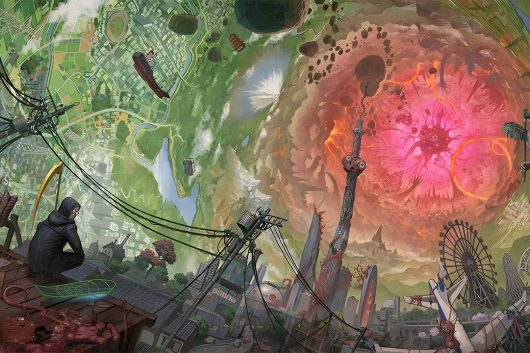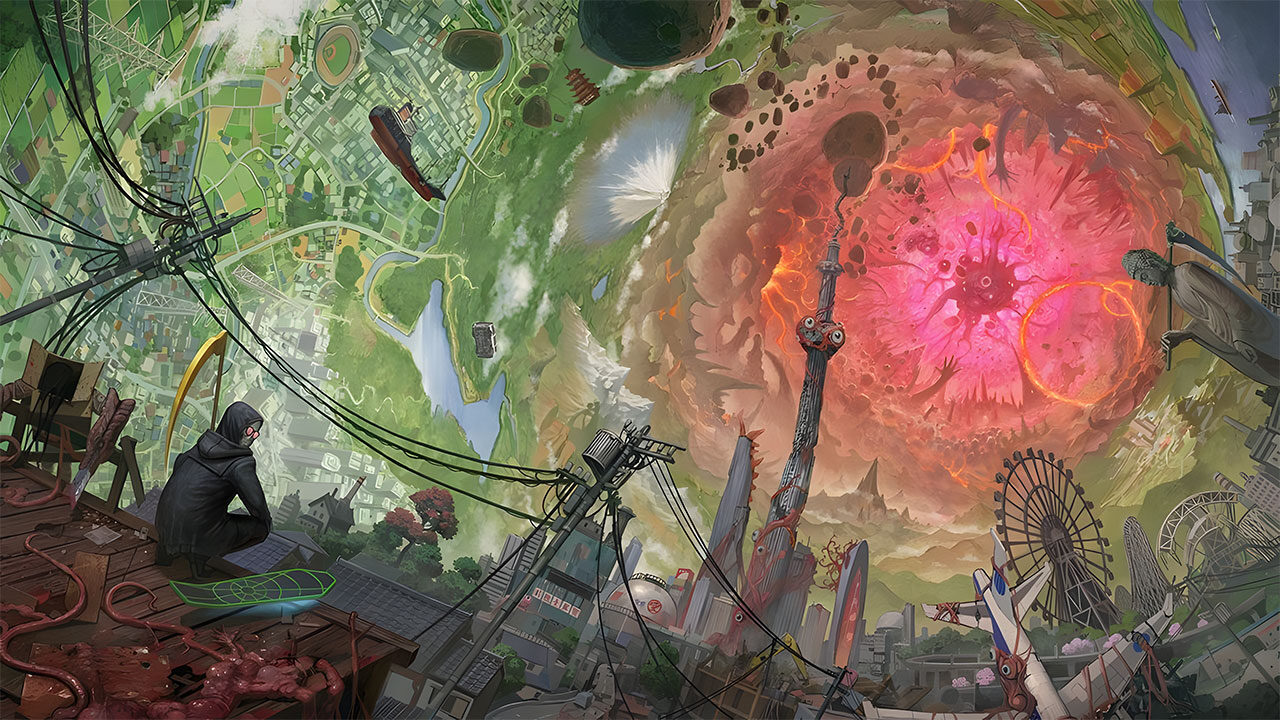


Let It Die: Inferno has returned once more, transforming with the times and merging ideas from the previous two editions into something fresh, exhilarating, and utterly chaotic. Named Let It Die: Inferno, this newest installment in the mercilessly challenging series, which began in 2016, had me captivated after just a brief 30 minutes of gameplay. Created by Supertrick Games and distributed by GungHo Online Entertainment, Inferno is a direct sequel to the initial Let It Die.
This time, players won’t be scaling a perilous tower. Instead, they will dive into the convoluted abyss of Hell Gate, a vast chasm forged from catastrophe. It promises more dangers and deeper enigmas than ever, and based on the early preview, it already looks absolutely wild.
Upon entering, there’s a significant amount of lore that establishes the groundwork for this latest release, providing players with an idea of what awaits them when they launch the game. Let It Die: Inferno is set in the aftermath of the Earth Rage, a disaster that reshaped the planet and birthed the Hell Gate, an enormous chasm extensive enough to engulf entire cities.
Nestled deep within the gate is the Eye of the Reaper, a formidable crystal said to harbor energy strong enough to confer dominion over the world—because, naturally, a random hell crystal would. Staying true to Let It Die tradition, players take on the role of a Raider, immortal adventurers each equipped with a signature weapon, who are charged with venturing into the depths of Hell to gather Splithium, the ultra-energy powering humanity’s latest fixation. And obviously, they will experience plenty of deaths along the journey. Sounds thrilling, doesn’t it?
It’s a lot to absorb, but the fundamental gameplay is clear: plunge into these hellish rifts, die along the journey, and push deeper while battling creatures and other players. The lore builds on familiar ground for returning players, but with new spins and a darker, yet oddly humorous, narrative thread that never treats the game’s essence too seriously.
Among these aspects, the legendary Uncle Death makes his return as a menacing, yet perpetually sardonic, guide throughout the player’s adventure. His irreverent remarks and in-game existence have been a consistent element in the series, remaining a hallmark that imparted the first game with its unique aesthetic and charm.
I have always appreciated the style and premise of the series, with the original title, developed by Grasshopper Manufacture, embracing the absurd and ultraviolent vibe seen in many of the studio’s creations. I did not engage much with Deathverse: Let It Die, the second installment in the series, but from what I gather, Let It Die: Inferno aligns much better with what fans anticipate from the franchise. Even during the brief time I’ve spent playing, the game is already resonating well.
In contrast to its predecessor, which focused on ascending the Tower of Barbs, Let It Die: Inferno is centered on enduring successive descents into Hell Gate’s ever-changing corridors. Each endeavor in Inferno features procedurally generated designs, random item placements, and a rotating array of grotesque monsters and hostile Raiders. No two journeys unfold identically.
“Let It Die: Inferno is centered on enduring successive descents into Hell Gate’s ever-changing corridors.”
Die, and you lose your gear, unless it is safely stored, though abilities persist into your next reincarnation. This facilitates significant progression even amidst repeated failures and revivals. It embodies the classic roguelike framework, seen through the perspective of a lunatic, and it proves highly engaging.
In the game, you embody Raiders, endowed with the capability to dual-wield from the start. This serves as the foundation of the title’s revamped melee combat mechanism. Each descent feels distinctive, as the combination of abilities and weapons alters the combat rhythm and overall experience with every new attempt.
This means weapon synergy becomes crucial alongside player reflexes, especially in critical moments when loot collection or quick improvisation is essential for survival. It’s a fascinating concept that compels players to modify their loadouts with each endeavor at the Hell Gate. One trial might have you wielding a sword and a ranged weapon, while the next could see you outfitting a rollerblade (yes, this is indeed a real weapon in the game) and an axe, each providing unique abilities and fresh combat strategies.
By incorporating elements from Deathverse: Let It Die and adding layers of complexity, the game presents an innovative PvEvP (player versus environment versus player) framework. Within the hellish abyss, players must combat not only a multitude of monsters and bizarre entities originating from the depths of Hell but also contend with rival human Raiders in real-time confrontations.
For those seeking a competitive advantage, the resurgence of a standalone multiplayer mode allows opportunities to refine skills and earn bragging rights in direct showdowns.
No Comments
To comment you need to be logged in!